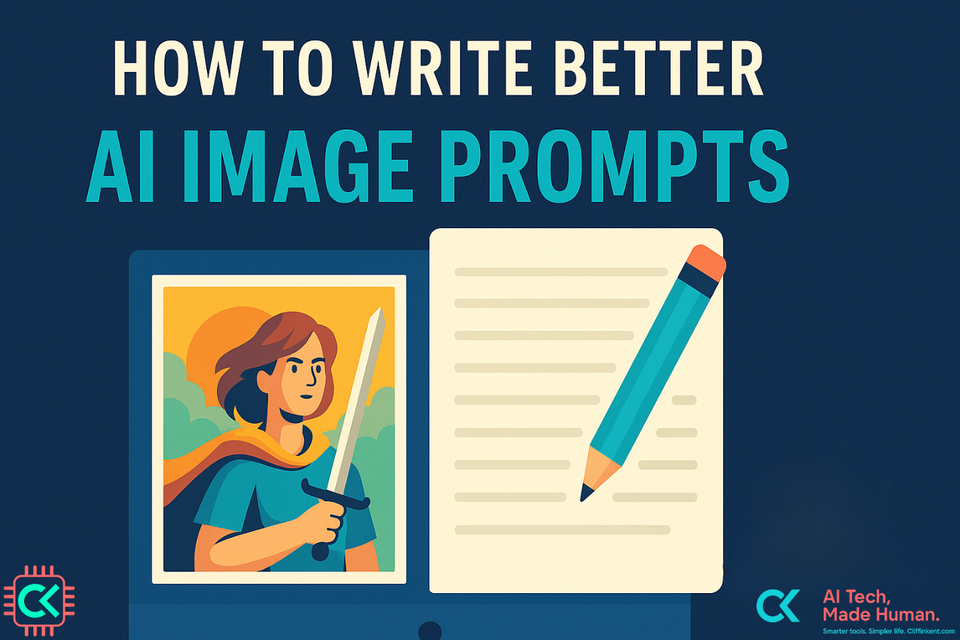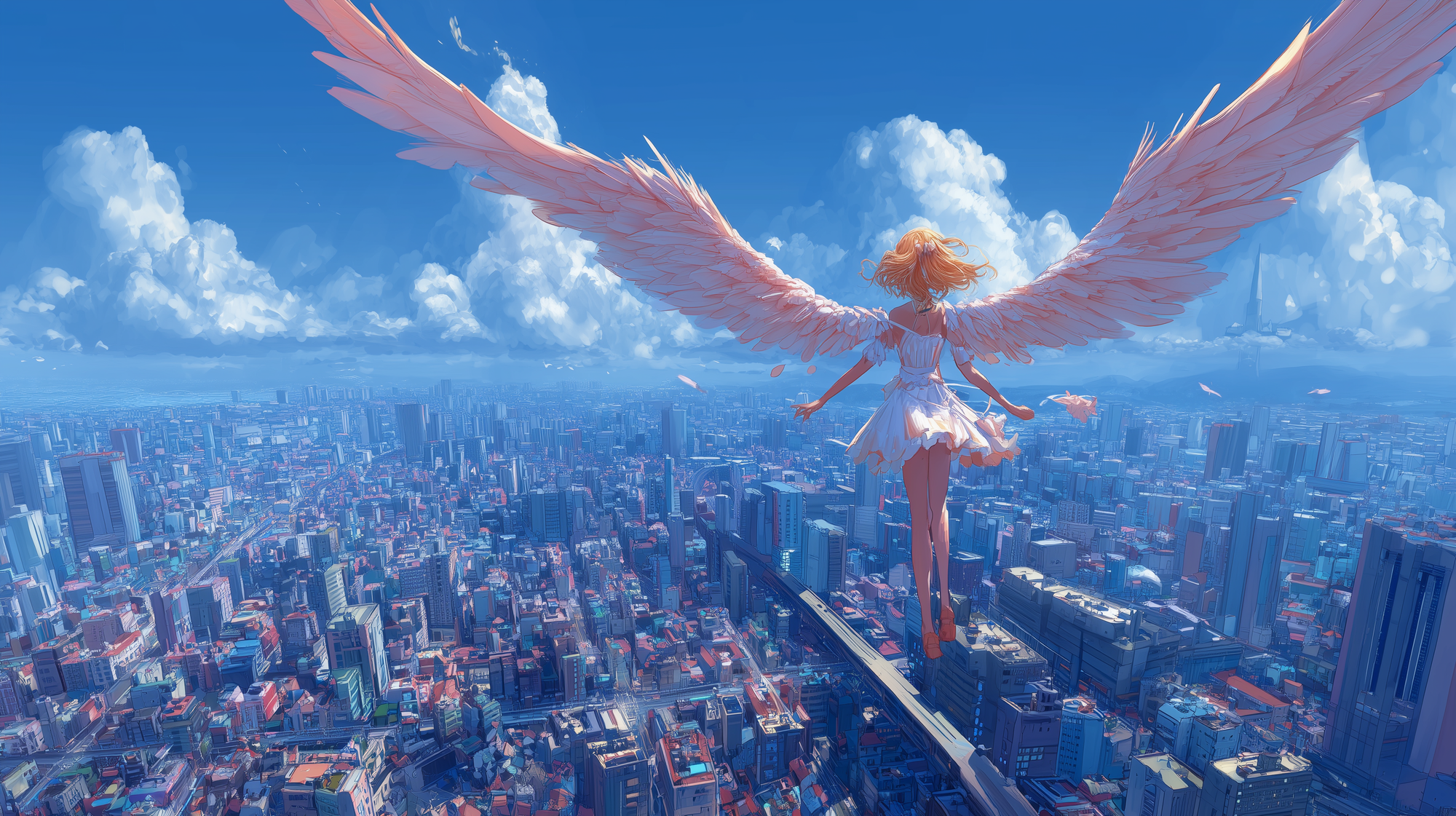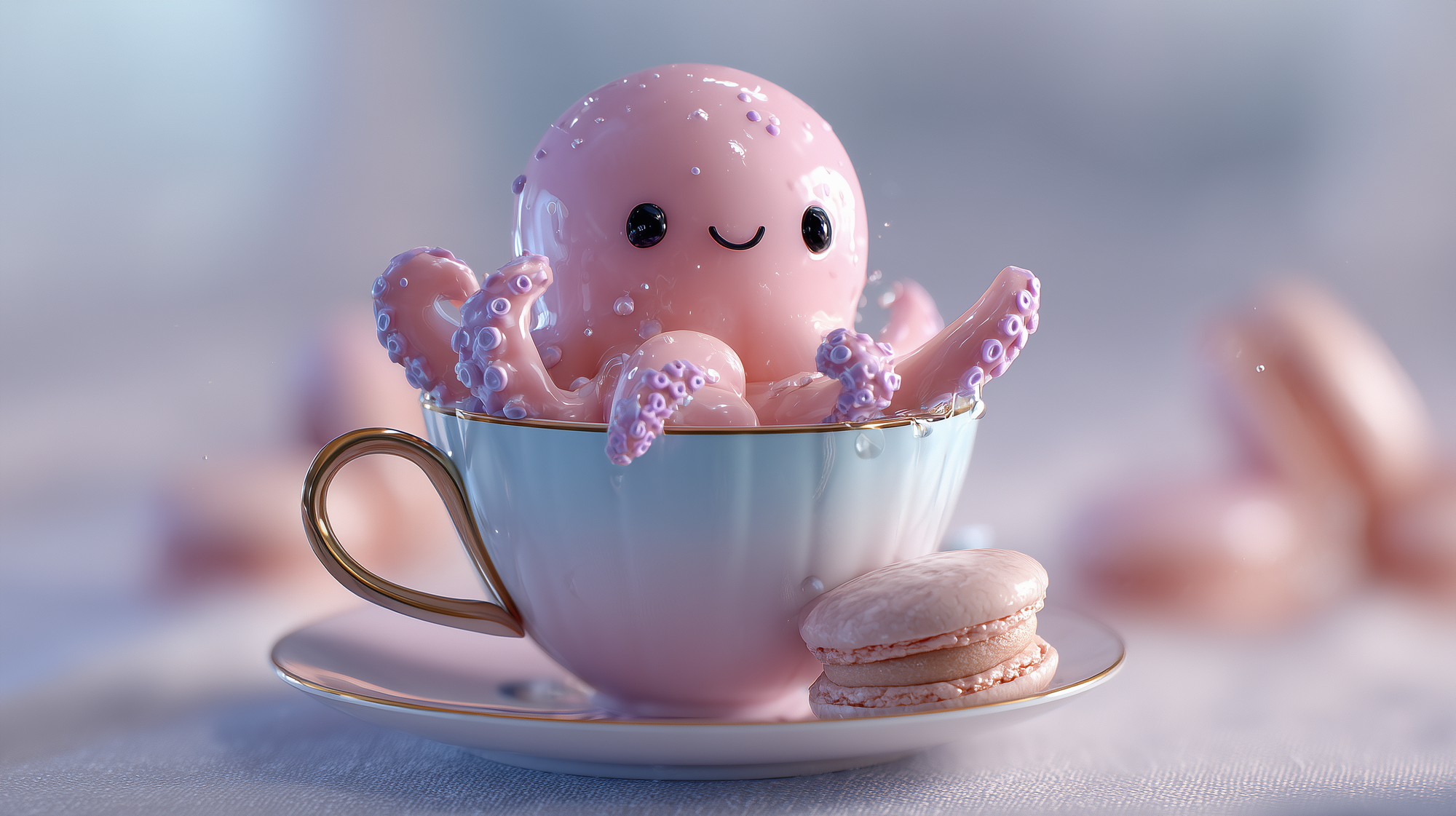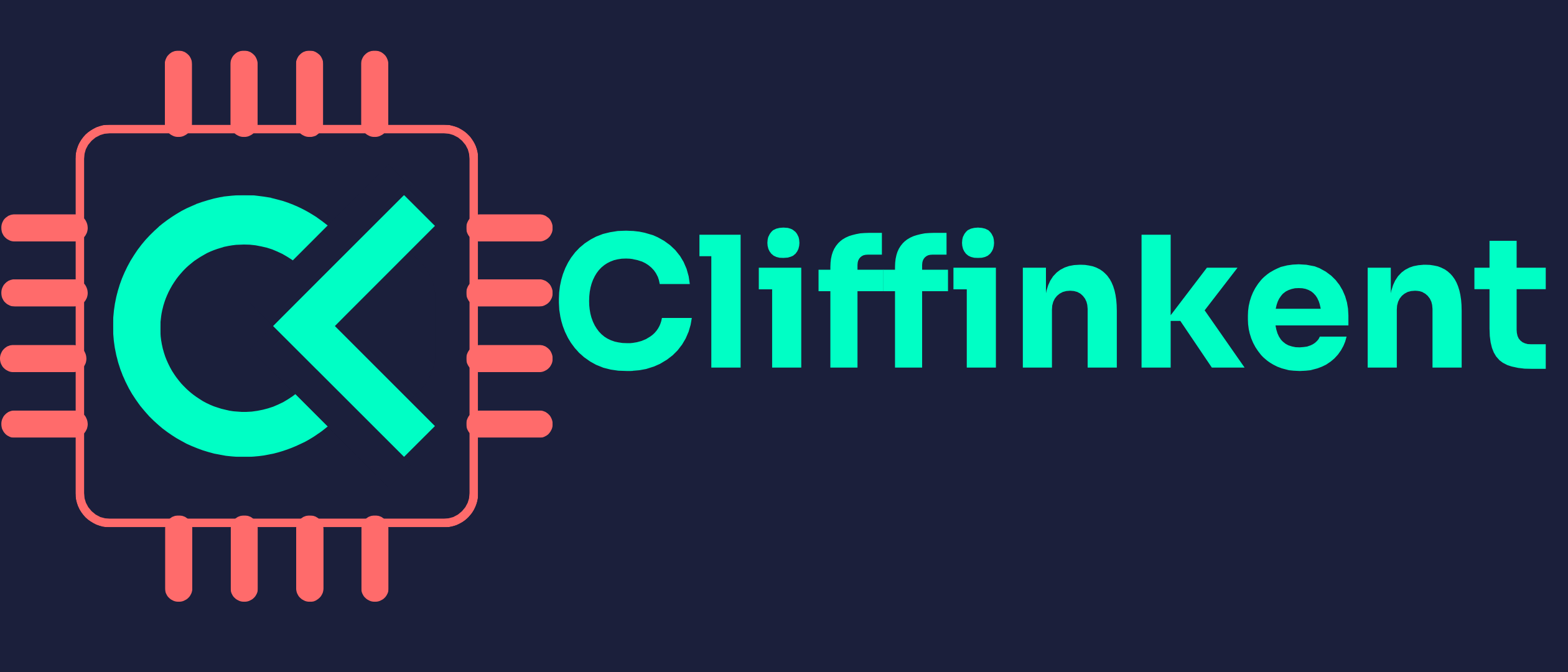🎨 How to Write Better AI Image Prompts (and Why It’s a Superpower)

Words are now a design tool.
If you’ve ever typed something like “cyberpunk cat DJ” into an image generator and got back either chaos or brilliance, congrats—you’ve already played with prompt engineering.
Here’s the thing: the gap between meh and mind-blowing often comes down to how you word that prompt.
Whether you're designing for a side hustle, posting on social, or just playing around, this guide will help you write image prompts that deliver scroll-stopping results. (If you’re brand new, start here »)
🧠 What Is Prompt Engineering for Images?
It’s the skill of telling an AI what to draw—using just words.
Imagine ordering at a hyper-literal art café:
- Ask for “robot” → you’ll get a default, forgettable one.
- Say “gold-plated humanoid robot with glowing blue eyes, standing in Times Square at night, cyberpunk style” → now we’re talking.
Tools like Midjourney, ChatGPT 4o, and Stable Diffusion read your words and paint from them directly.
The more specific you are, the better the art gets.
🔍 Prompt Frameworks That Work (With Real Examples)
Three simple frameworks can dramatically improve your results—whether you’re making storyboards, branding visuals, or just cool art.
1. The Subject + Style + Setting Formula
Structure:[Main Subject], [Art Style], [Background/Setting], [Lighting or Vibe]
Example:
“Boho woman dancing on the beach at sunset, Ibiza style, cinematic glow, soft pastel palette”

Try this:
Add “shot on 85mm lens” for realism, or “digital painting” for smoother, illustrated vibes.

2. Iterative Prompting (Refine as You Go)
Start with a basic idea. Then keep tweaking—like editing a photo before it’s taken.
First draft:
“Cute angel flying over a city, anime style”

Refined:
“Anime-style angel with glowing wings, flying above neon Tokyo skyline, wide shot, soft lighting”

Each version gets closer to your vision.
3. The Keyword Stack Method
Borrowed from pro prompt sellers (like PromptBase), this method layers descriptive keywords and engine terms.
Formula:[Subject] + [Modifiers] + [Style Tags] + [Engine Keywords]
Example:
“Octopus in a teacup, pastel colors, kawaii style, trending on ArtStation, 8K, Unreal Engine render”

Style tags to try:
- Studio Ghibli – whimsical and animated
- Octane Render – crisp, 3D, high contrast
- Film still, 35mm – moody, retro realism
🛠️ Try This Prompt
Copy and paste this into your favorite image tool:
“Afrofuturist explorer standing under a glowing alien arch, dusk lighting, surreal desert landscape, concept art, highly detailed, cinematic”
Tweak the time of day, change the setting, swap the character. See what shifts.
📈 What the Research Says
Studies show the best prompts follow three big rules:
- Use vivid, sensory language
- Add details—lighting, emotion, texture
- Refine through multiple drafts
One study even found students became more creative and design-savvy just by learning better prompt techniques. It’s like visual thinking on fast-forward.
💡 From Prompt to Portfolio
Prompting isn’t some geeky trick—it’s now how:
- Indie authors make their covers
- Etsy shops create product art
- Designers build concept boards
- Solopreneurs test brand ideas fast
If you’re creative or run a business, it’s a must-know skill.
🧠 Want to Learn More?
This article focuses on images—but prompt engineering spans writing, productivity, and coding too.
To dive into that world, start with our full guide »
Once you get fluent, even typing feels like a superpower.
🗣 Question for You:
What’s the weirdest or most impressive prompt you’ve tried—and what did it make? Leave me a comment below
📚 References
- Darmawan, A. J., et al. (2024) – Harnessing AI Image Generator Prompt Engineering for Academic Excellence
– Focus: Prompt structure components, education outcomes, and student examples with Midjourney, DALL·E, and Stable Diffusion - Naseh, A., et al. (2024) – Iteratively Prompting Multimodal LLMs to Reproduce Natural and AI-Generated Images
– Focus: Iterative prompting strategies, keyword + modifier extraction, and prompt refinement techniques - Kulkarni, N. & Tupsakhare, P. (2024) – Crafting Effective Prompts: Enhancing AI Performance through Structured Input Design
– Focus: Prompt types (rule-based, context-based), characteristics of good prompts, and iterative refinement in AI prompting
